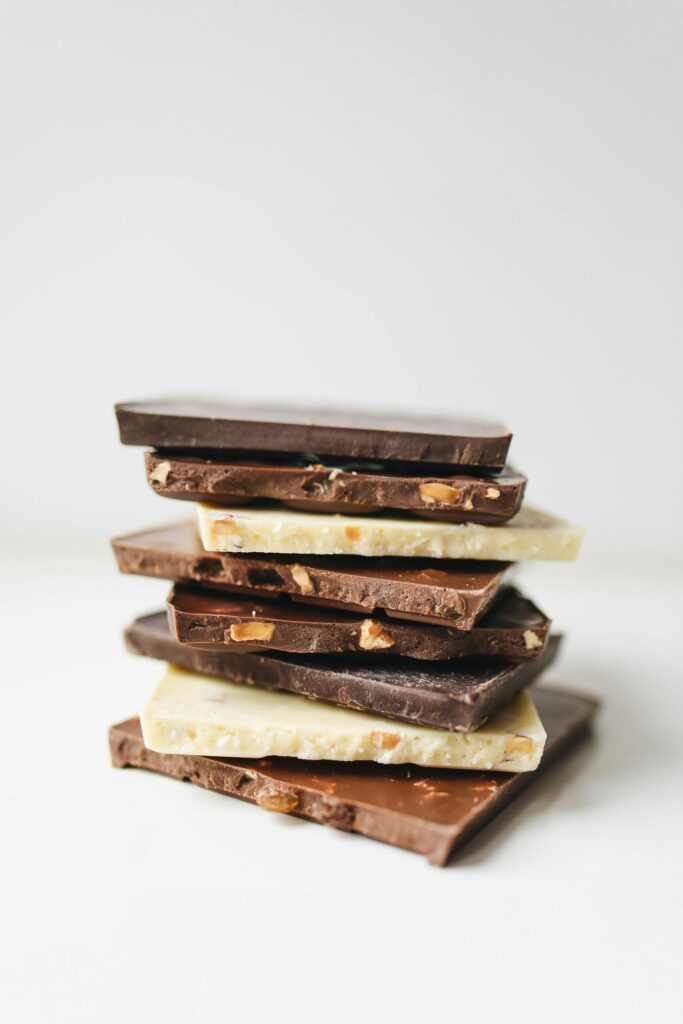Understanding the Differences Between Milk, Dark, and White Chocolate

Chocolate is a beloved treat worldwide, but not all chocolate is created equal.
Whether you’re indulging in a rich dessert or enjoying a simple chocolate bar, knowing the differences between milk, dark, and white chocolate can enhance your experience. Let’s dive into the unique characteristics of each type.
Dark Chocolate
Ingredients
Dark chocolate is composed of cocoa solids, cocoa butter, and sugar, without any milk solids. This combination gives it a rich, deep flavor profile.
Cocoa Content
Dark chocolate typically has a higher cocoa content, ranging from 50% to over 90%. The higher the percentage, the more intense the chocolate flavor and the less sweet it tends to be.
Flavor Profile
The taste of dark chocolate is often described as bold and bittersweet, with complex flavors that can include notes of fruit, nuts, or even spices, depending on the source of the cocoa beans.
Health Benefits
Dark chocolate is known for its potential health benefits, thanks to its high levels of antioxidants and lower sugar content. It may help improve heart health and boost mood.
Uses
It’s a favorite in baking, confections, and gourmet desserts, making it a versatile ingredient in the culinary world.
Milk Chocolate
Ingredients
Milk chocolate contains cocoa solids, cocoa butter, sugar, and milk solids, which contribute to its creamy texture and sweeter flavor.
Cocoa Content
Milk chocolate typically has a cocoa content of 10% to 50%, which makes it less intense than dark chocolate.
Flavor Profile
The flavor is sweeter and creamier, with a mild cocoa taste that appeals to a wide audience, especially those who prefer less bitterness in their chocolate.
Popularity
Milk chocolate is incredibly popular for candies, bars, and snacks, often enjoyed by children and those looking for a sweet treat.
Uses
It’s commonly used in a variety of confections, from bars and bonbons to hot chocolate and desserts.
White Chocolate
Ingredients
White chocolate is made from cocoa butter, sugar, and milk solids, but it does not contain cocoa solids. This absence is crucial in distinguishing it from dark and milk chocolate.
Cocoa Content
Since it lacks cocoa solids, white chocolate doesn’t have a cocoa percentage, which can be confusing for chocolate lovers.
Flavor Profile
White chocolate is known for its sweet, creamy flavor with a hint of vanilla. It lacks the bitter notes of dark and milk chocolate, making it a unique choice.
Uses
While it’s often viewed as a more dessert-like chocolate, white chocolate is popular in baking, as a coating for treats, and for decorative elements due to its smooth texture and ability to be tinted.
Summary
- Dark Chocolate: High in cocoa content, no milk, rich and intense flavor.
- Milk Chocolate: Contains milk solids, is sweeter and creamier, and appeals to a broad audience.
- White Chocolate: No cocoa solids, sweet and creamy, mainly cocoa butter and milk.
Each type of chocolate offers a unique taste and experience. Whether you prefer the boldness of dark chocolate, the sweetness of milk chocolate, or the creamy texture of white chocolate, understanding their differences can help you choose the right chocolate for any occasion.
So, next time you reach for a chocolate treat, consider the type that best suits your mood and palate!
